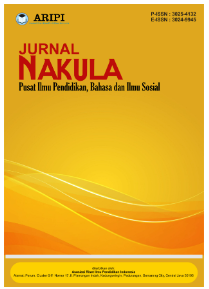Analisis Penerapan Latihan Fisik Pada Siswa Sekolah Dasar
DOI:
https://doi.org/10.61132/nakula.v2i4.939Keywords:
Physical Education, Physical Training, Elementary School StudentsAbstract
Exercise is a body movement carried out by muscles in a planned, structured and repetitive manner, which involves the use of energy to improve fitness. According to the World Health Organization (WHO), school age children are children aged 7 to 15 years. Every individual has traits and characteristics or innate characteristics and characteristics obtained from environmental influences. The research method used in this research is descriptive analysis with a qualitative approach. This research uses a qualitative approach. Physical activity is an important aspect in the lives of elementary school age children. Elementary school age children still have limitations in terms of body endurance and ability to adapt to heavy training loads. Primary school age children are in a dynamic stage of development, so there is a need for specially designed training programs to increase their motivation and participation in physical activity. In this way, the benefits of physical activity can be maximized and support optimal growth and development for elementary school students. This collaborative effort will help create an environment that supports an active and healthy lifestyle from an early age.
Downloads
References
Dharma Hita, I. P. A., Pranata, D., & Efendi, M. (2021). Analisis tingkat konsentrasi anak usia 11-13 tahun melalui aktivitas fisik olahraga renang. Jurnal Patriot, 3(4), 397-407. http://patriot.ppj.unp.ac.id/index.php/patriot/article/view/809
Hita, I. P. A. D., Pranata, D., & Efendi, M. (2021). Analisis Tingkat Konsentrasi Anak Usia 11-13 Tahun Melalui Aktivitas Fisik Olahraga Renang. Jurnal Patriot, 3(4), 397-407. http://patriot.ppj.unp.ac.id/index.php/patriot/article/view/809
Hubbard, K., Economos, C. D., Bakun, P., Boulos, R., Chui, K., Mueller, M. P., ... & Sacheck, J. (2016). Disparities in moderate-to-vigorous physical activity among girls and overweight and obese schoolchildren during school-and out-of-school time. International Journal of Behavioral Nutrition and Physical Activity, 13(1), 1-9. https://doi.org/10.1186/s12966-016-0358-x
Iyakrus, I. (2018). Pendidikan Jasmani, Olahraga Dan Prestasi. Altius: Jurnal Ilmu Olahraga Dan Kesehatan, 7(2).
Rina, R., Jvp, S., Gmc, M., Rc, D. R., Rd, C., & Csb, D. S. (2018). Physical activity: Benefits for prevention and treatment of childhood obesity. Journal of Childhood Obesity, 3(1), 1-6. https://doi.org/10.21767/2572-5394.100058
Robinson, L. E., Palmer, K. K., Webster, E. K., Logan, S. W., & Chinn, K. M. (2018). The effect of CHAMP on physical activity and lesson context in preschoolers: A feasibility study. Research Quarterly for Exercise and Sport, 89(2), 265-271. https://doi.org/10.1080/02701367.2018.1441966
Sari, F. N., Fitriyani, P., & Widyatuti, W. (2022). Promosi Kesehatan Latihan Fisik Anak Usia Sekolah Dalam Masa Pandemik Covid 19 Di Limo, Depok. Jurnal Pengabdian Masyarakat IPTEKS, 8(2), 148-155. http://jurnal.unmuhjember.ac.id/index.php/PENGABDIAN_IPTEKS/article/view/5770
World Health Organization. (2019). Prevalence of insufficient physical activity among school going adolescents. https://www.who.int/data/gho/data/indicators/indicator-details/GHO/prevalence-of-insufficient-physical-activity-among-school-going-adolescents-(-)
Downloads
Published
How to Cite
Issue
Section
License
Copyright (c) 2024 Jurnal Nakula : Pusat Ilmu Pendidikan, Bahasa dan Ilmu Sosial

This work is licensed under a Creative Commons Attribution-ShareAlike 4.0 International License.






